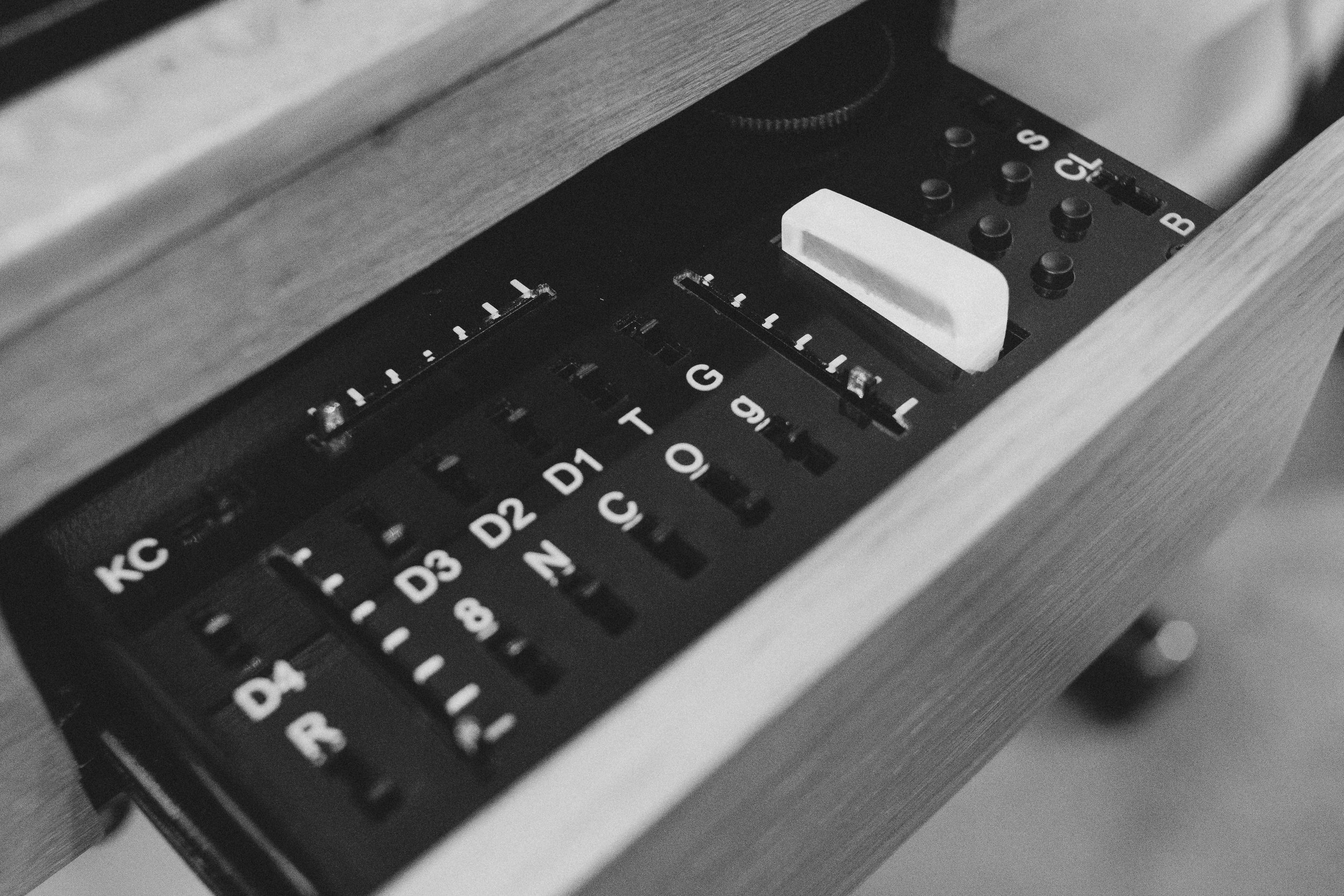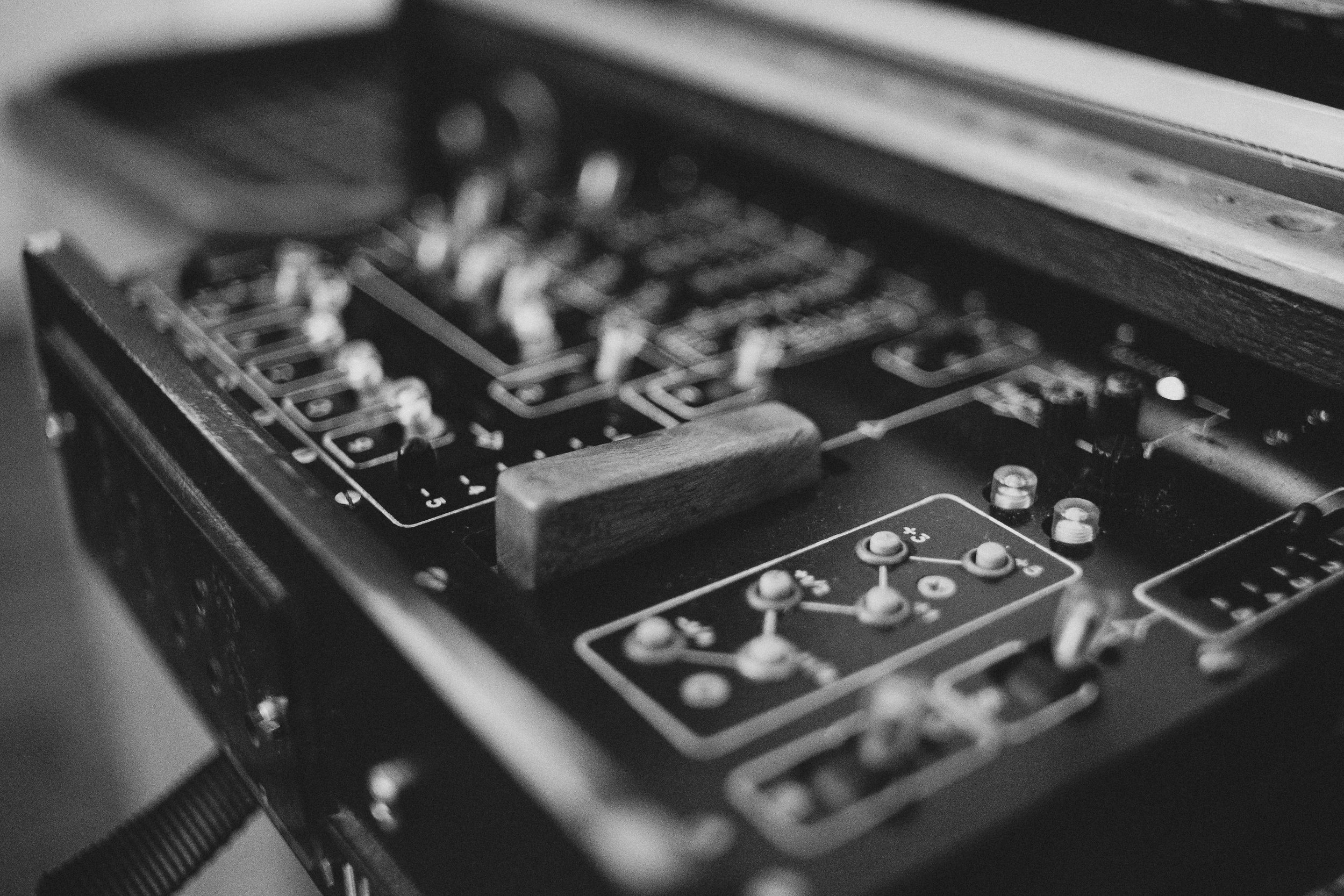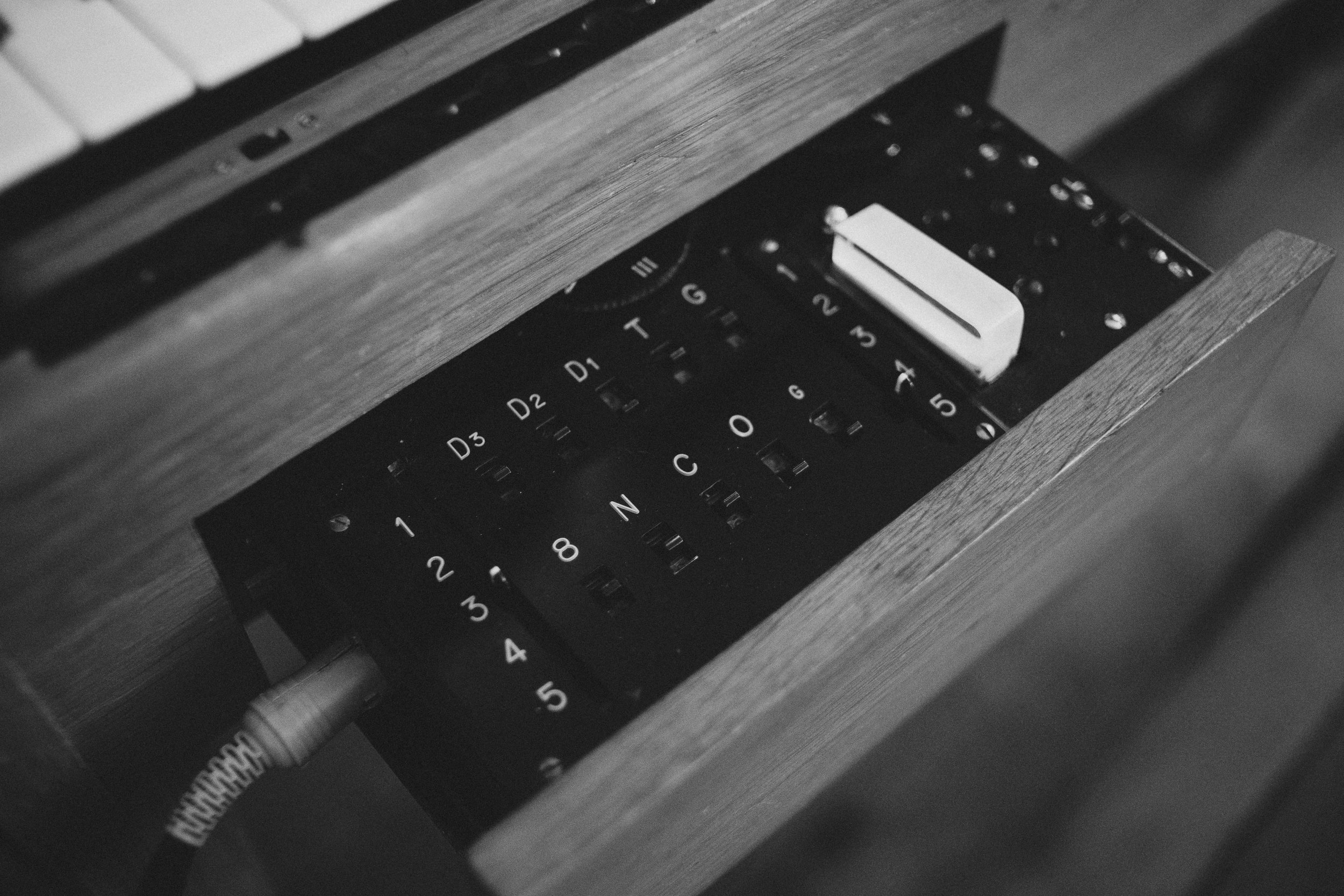A (very) brief history of the ondes Martenot.
The ondes Martenot is one of the earliest electronic musical instruments, first introduced to the world at the Paris Opera in May 1928 after around 10 years of work on the first version. It was invented by Maurice Eugene Louis Martenot, a Frenchman, cellist, and wartime radio operator. During his time as a radio operator in World War 1, he began to use the valve-based equipment to play tunes to his comrades. Maurice worked very hard on his instrument and he built 7 different versions (amongst smaller runs of other versions) over almost 60 years, but we do not know exactly how many instruments were built. Original Martenot instruments are very rare today, and are mostly seen in museums and conservatoires, though some ondistes do still perform with them.
Maurice Martenot died in 1980, but the ondes Martenot lived on, and still does to this day. There are several versions of the instrument currently in production; Jean-Loup Dierstein’s ondes musicales from Paris, the Ondéa by The Audities Foundation in Canada, and ASADEN’s travel-friendly Ondomo, built in Japan. Each of these instruments have a different approach to the overall design, ergonomics, and technology of the ondes, and each have their merits, of course. Jean-Loup’s ondes musicales is a faithful reproduction of the Mk. 7 ondes Martenot, with some notable improvements of Jean-Loup’s own design. Audities’ Ondéa is a more modern take on the ondes Martenot, an improvement upon the first Ondéa built by SEAM. ASADEN’s Ondomo is a smaller, travel-friendly version of the ondes Martenot, designed for students.
Carry on reading for more information about how the ondes is played, some sound samples, some images, and even some information on how to write for the ondes Martenot. If you’d like to know even more and it isn’t mentioned on this page, then do not hesitate to contact me!
All of this information is from years of obsessive research, endless discussions with many ondistes, and the knowledge I have developed from working with this instrument. If you want to check out some other resources, I would heartily recommend Jean Learendau’s ‘Maurice Martenot: le luthier d’instument electroniques’, and Jeanne Loriod’s invaluable ‘TECHNIQUE’ books. Extra recommended reading would be Maurice Martenot’s ‘Se Relaxer’, and his ‘Methode’ book.
How do you play the ondes Martenot?
The ondes Martenot changed dramatically in the early years; the first two iterations had no keyboard, and were played whilst standing up! In the 1940s, the playing technique, appearance, and design of the instrument began to stabilise. The most recognisable thing about the ondes, and a good starting point in explaining it, is the keyboard. The synthesiser-style keys are smaller than that of a piano, and it is monophonic, meaning that you can only play one note at a time. The keyboard also moves slightly from side to side, allowing the player to impart their own unique vibrato with absolute control of depth and speed. As the ondes Martenot is a French instrument, playing with the keyboard is known as playing ‘au clavier’.
The keyboard has a ‘low-note priority’ meaning that when multiple keys are pressed simultaneously, the lowest note will sound. This means that fast trills are easily performed, which, when coupled with some reverb, can give the illusion of chords.
This keyboard is, of course, a means of controlling the pitch of the tone produced by the ondes, but there is also second way to control the pitch. Just beneath the keyboard there runs a string, upon which is a ring. The player puts their right index finger in this ring, and moves it up and down the length of the keyboard. This string runs above a sort of fretboard, made up of dips and pins that correlate to the keyboard. The dips correspond to the white keys, and the pins correspond to the black keys. This ‘fretboard’ is used only to guide the player to the notes, it does not have a direct effect on the pitch. This way of controlling the pitch is called playing ‘au ruban’ or ‘with the ribbon’. This comes from earlier instruments, which had the ring attached to conductive ribbon. In more modern insturments, the ring is attached to string, which is wrapped around a multi-turn potentiometer. It is worth noting that you can only control the pitch with either the keyboard or the ribbon at one time, not both.
The octave range of the ondes is usually controlled using a lever just below the keyboard. On a score for the ondes, the lower position is dictated by an arrow pointing down and to the right, and the upper position is indicated by an arrow pointing up and to the right. The ondes can cover a very large range, as you can see!
While the right hand is controlling the pitch, the left hand rests on the ‘tiroir’ or ‘the drawer’. This drawer pulls out from the instrument, and contains many controls, including the switch that alternates between keyboard and ribbon. Most importantly, though, it contains the ‘touche d’intensité', or, essentially, the volume control. The touche d’intensité is operated primarily by the left index finger, though the proper technique requires the articulation of the whole left hand, arm, shoulder, etc. The touche is pushed downwards into the drawer to increase the volume. This simple principle allows a great deal of dynamic control and expression, from the quietest pianissimo, to the very loudest fortissimo; from the gentlest legato, to a percussive staccato.
In Martenot’s instruments, the touche relied on a leather bag, filled with a mixture of powders. This magical powder bag is incredibly responsive, and has been the subject of numerous scientific studies. Instruments that are built today rely, instead, on different means, such as magnets, pressure sensors, and capacitative strips of metal.
What does it sound like?
At this point, it is worth noting that the ‘sound’ of the ondes Martenot is not just down to the oscillators inside it, but also down to the gesture of the player as well as the collection of unique speakers that Martenot designed alongside the ondes. That said, there are a number of switches and faders in the tiroir that control the various tones and speakers. Available to the ondiste is a large selection of timbres, from soft, simple sine waves, to harsh, rich square waves. The tones can be combined, and some tones can be modified by using additional controls. Here are some rough visual representations of the timbres.
This naming system, and this particular collection of tones was not present in the ondes Martenot from the beginning. Earlier models had fewer tones, and were generally identified using only numbers, instead of letters. The ‘contemporary’ tones and names came about with the Mk. 6 ondes Martenot. Unfortunately, there is no concordance for how the pre-Mk. 6 tones relate to these. It is also important to note that each ondes Martenot sounds a little different, and the currently available instruments all sound a little different from each other, as well.
The four speakers used with the ondes Martenot were designed and built and different points over Maurice’s lifetime, and most of them are designed to modify, not only amplify, the sound produced by the electronics inside the ondes.
D1 / principal - a simple, dry loudspeaker, similar to ones used with electric guitars.
D2 / resonance - often found in the same cabinet as D1, D2 uses springs mechanically coupled to the speaker cone to produce a reverb effect.
D3 / metallique - a gong with a motor attached, producing ethereal, metallic resonances.
D4 / palme - tuned strings, excited by a motor, stretched across a leaf-shaped acoustic body, which provides a wonderful halo of resonance.
When writing music for the ondes, the specific speaker and tone instructions are usually written above the stave. As ‘g’ and ‘8’ use sliders, (found in the tiroir) to adjust their volume, they are often accompanied by a number, indicating how loud those tones are to be set. This is where the composer would also note whether the part is played au clavier or au ruban, and how the blend control between the loudspeakers should be set (usually in roman numerals). The part with the instruction below would be played au clavier, in the upper octave, and the speaker blend control (which dictates the balance between D1 and the ‘reverb’ speakers D2/D3/D4, from 0 - V) would be set about halfway. The D1 and D2 speakers would be activated, along with ‘O’ and a little bit of ‘g’.









